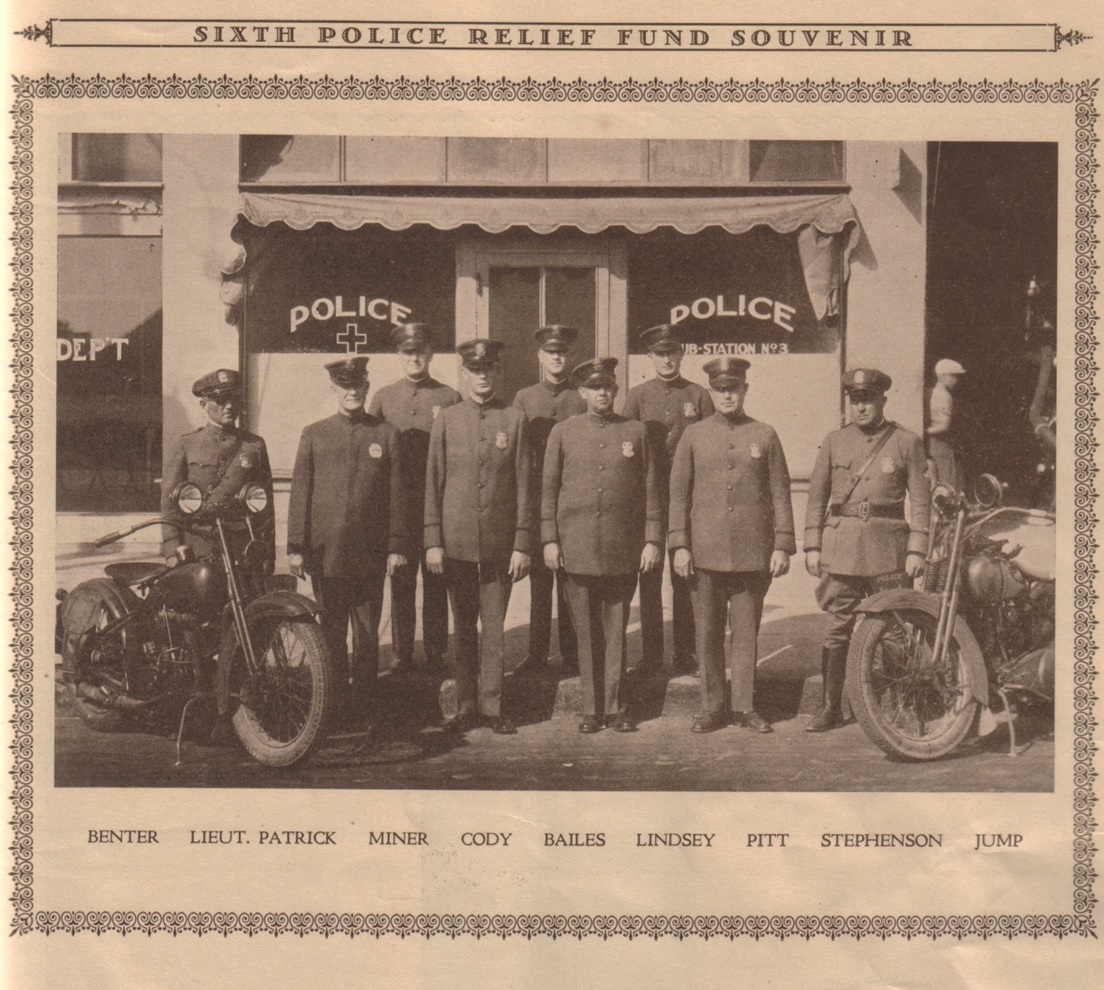
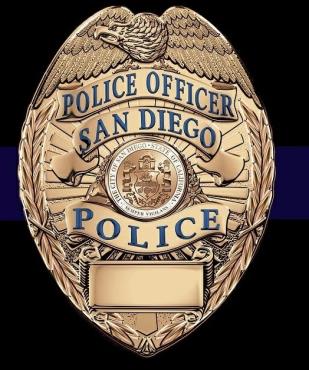

In May 1913, a new City Hall was constructed on Van Dyke Ave. City fathers were so embarrassed with the look of the completed building (it was said to resemble a bungalow) that they posed in front of a more stately building for official photographs (unfortunately, none survive to this day).
In 1914, ESD City Hall was located at 3854 Van Dyke Ave, probably the structure built in 1913. Coincidently, it was right next door to the home of then City Marshal James P. Ayers.
There's no specific evidence the Marshal’s Office was housed at City Hall, and with his residence right next door, perhaps Ayers worked from his home. In any case, with ESD’s top cop at the beck-and-call of the mayor, his boss, it was certainly a convenient situation.
As the city grew, the need for a consolidated city administration building became apparent. Up to this point, municipal offices were spread about town. In April 1916, a four-year-old former furniture store became available. The Toole Building was located on the northeastern corner of University and Van Dyke Avenues. It was large enough to house all the required City departments. By June 1, 1916, the new city hall was up and running.
East San Diego City Hall housed the mayor and city council, fire and police departments, and other assorted offices (treasurer, tax assessor, garage, etc.).
The first City Marshal to occupy the new office was James P. Ayers, freshly appointed to his 2nd term in the position (after resigning under duress and taking a short break from law enforcement). Ayers lasted until 1918, when William H. Gray stepped into the job.
Gray had a substantial policing background. His leadership expanded the casual little marshal’s office into a small police department during his four-year term. Local newspapers took to calling Gray the “Chief of Police.” Gray, in turn, referred to his marshals as the “police department,” even in letterhead and correspondence. By the time he was done, Gray had a traffic division using motorcycles to catch speeders, a night watchman, and a bicycle to transport officers about town.
The last City Marshal for East San Diego was Nathaniel J. McHorney, a good cop who continued much of Gray’s work (he had worked for Gray), though downsized the department somewhat.
In 1923, after 11 years on its own, East San Diego voted to consolidate with its larger neighbor and namesake, the City of San Diego. At noon on December 23rd, ESD “passed into history” and became a suburb.
San Diego’s department heads made the trip to ESD’s City Hall to commence the transfer of duties. SDPD Chief James A. Patrick appointed McHorney, “and others of the former ESDPD” to the SDPD then issued municipal badges and orders to proceed with their work.
Soon thereafter, the old ESDPD office became SDPD Sub-station 3. The station, overseen by a lieutenant, continued in use until 1949 when it was closed to “centralize” the department and save money.
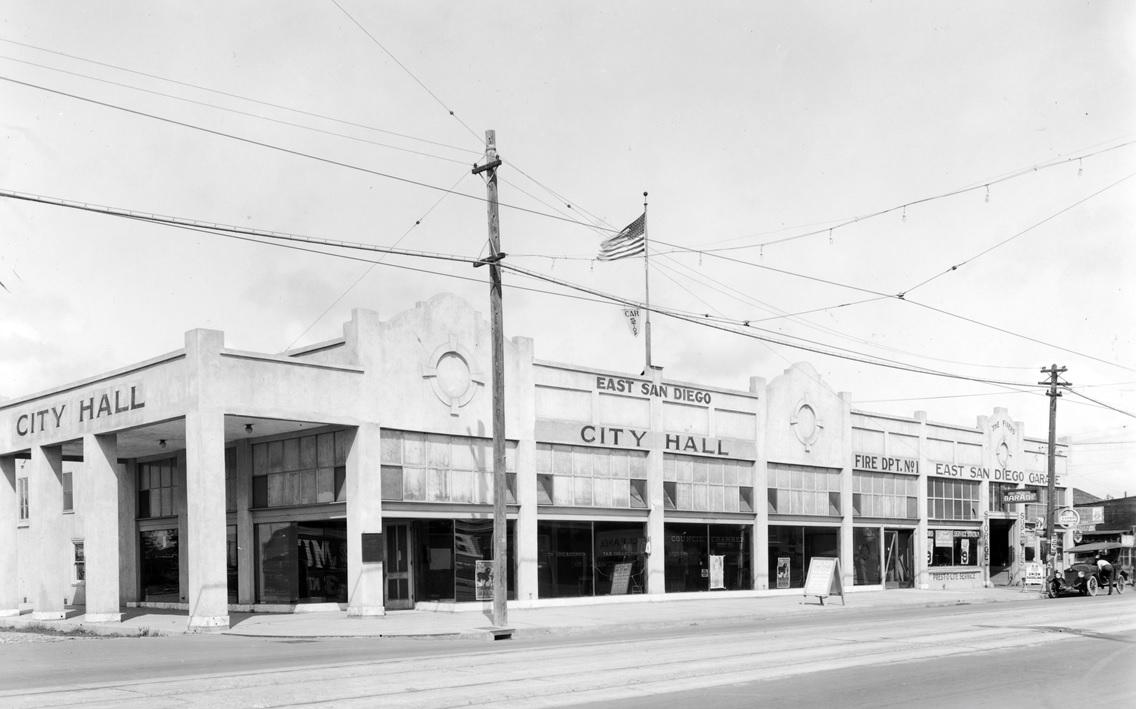
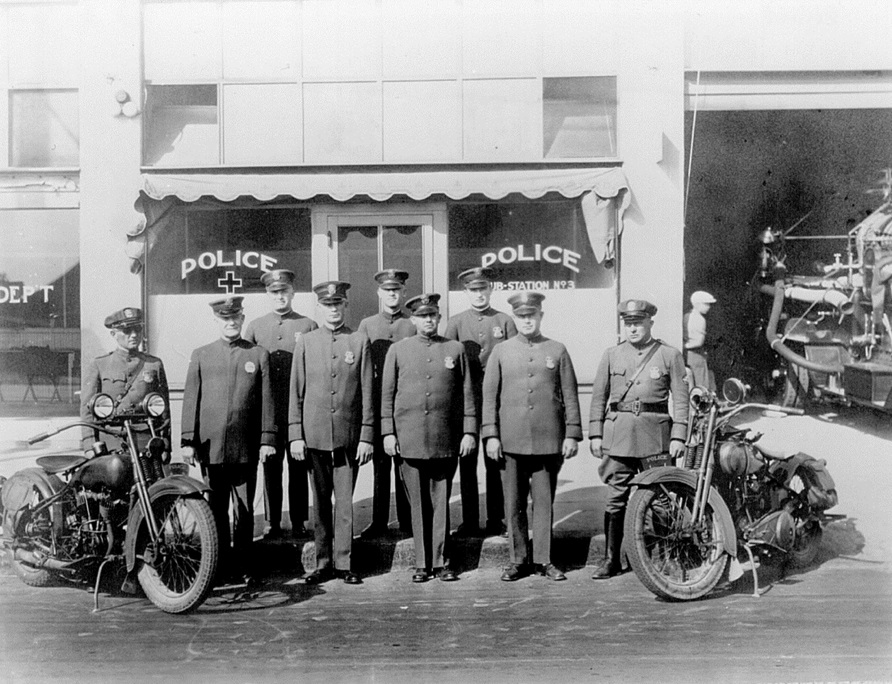
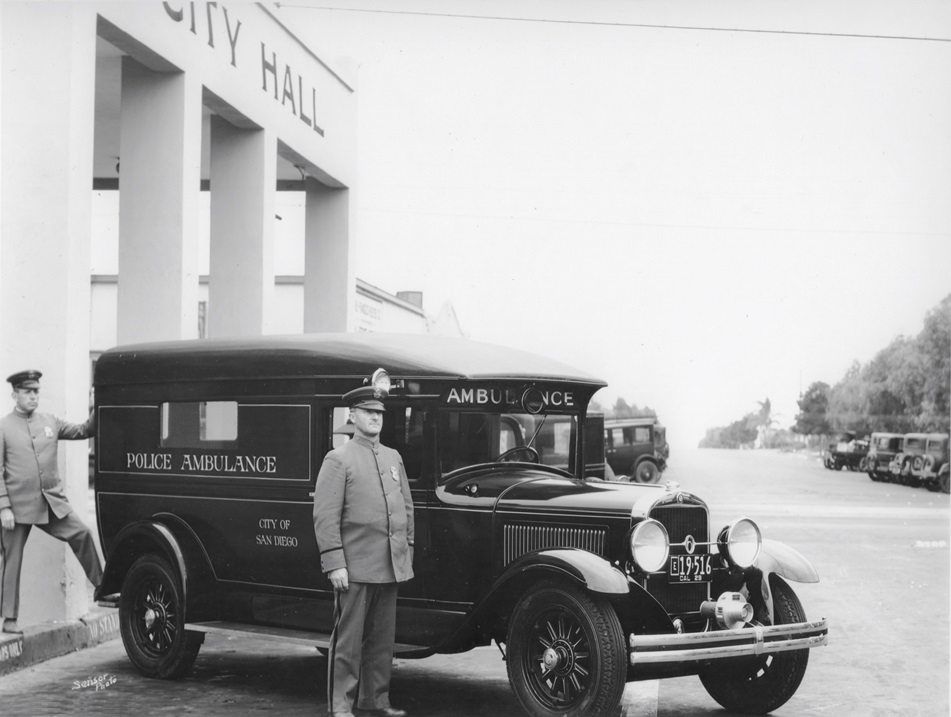
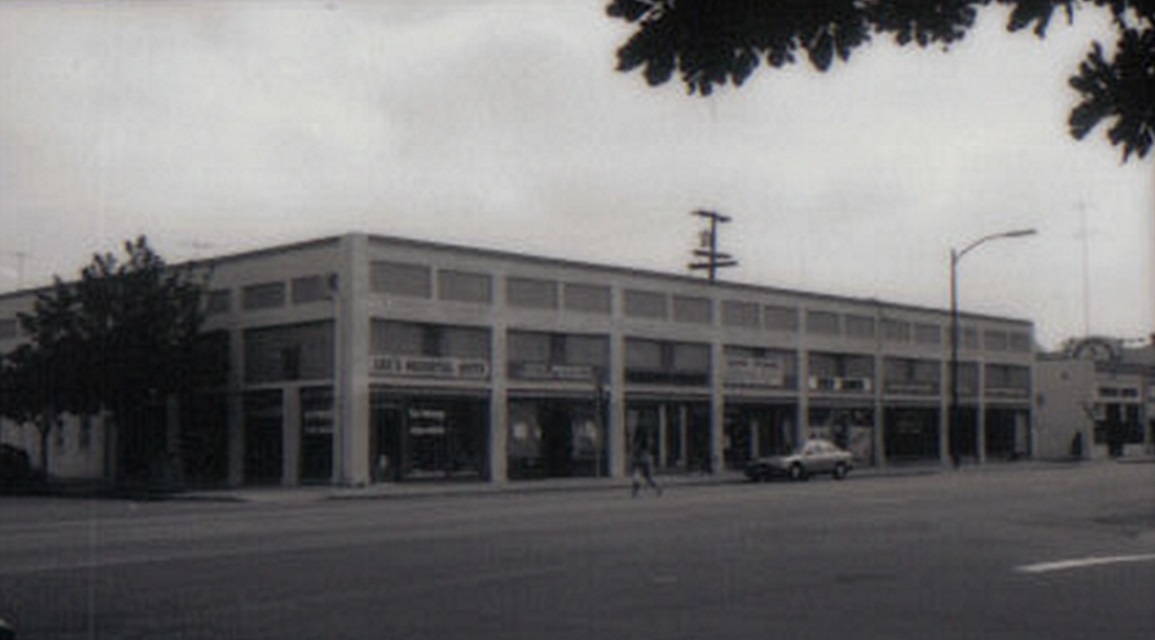
The Toole Building is still standing at Van Dyke and University Avenues. Now more than 100-years old the building has been partially modified and is home to numerous business storefronts.
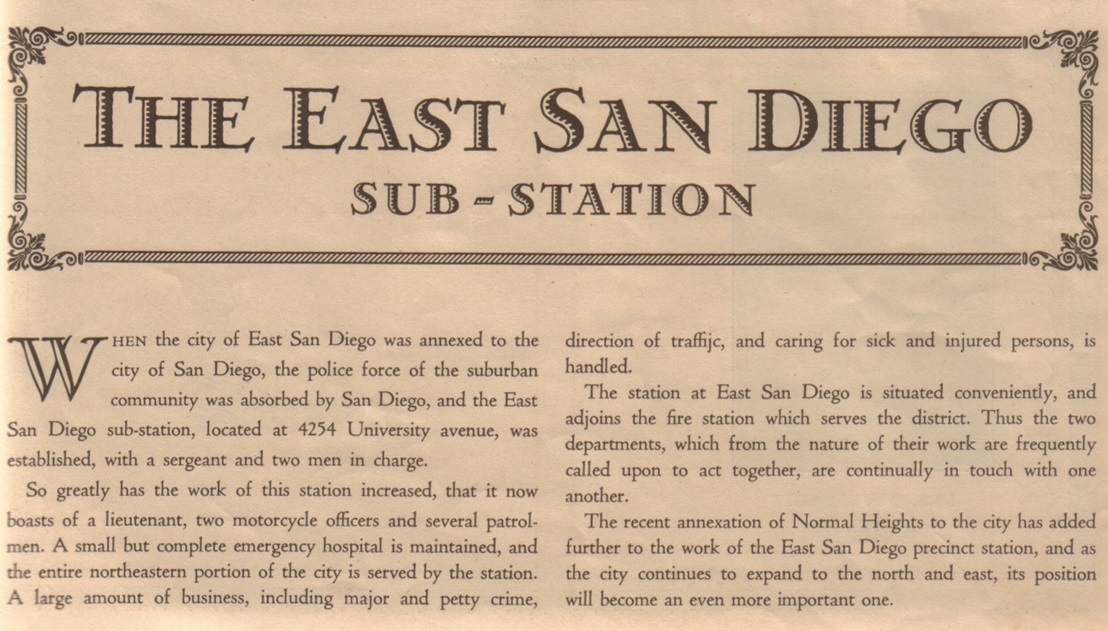
Officers assigned to the East San Diego sub (AKA Sub-Station No. 3) on the
Van Dyke Avenue side of the building, which faced University Avenue.
Notice the building still has its “City Hall” sign from its ESD cityhood days
The East San Diego City Hall in 1919, located on the northeastern corner of University and Van Dyke Avenues. The ESDPD worked out of this building.
Sub-Station staff in 1927. From left: D.C. Benter (motorcycle officer), Lt. James A. Patrick, Officers H.E. Miner, W.H. Cody, W.W. Bailes, H.S. Lindsey, H.F. Pitt, E.R. Stephenson, R.S. Jump. Interestingly, Lt. Patrick was the SDPD Chief who assumed control of the ESD force in December 1923
By Vice President Gary E. Mitrovich
The City of East San Diego was officially born on November 7, 1912, after a vote of the people residing in the community of City Heights. Hardly an overwhelming decision, only 76 more of the 800 voters voted for the incorporation than against. The new city fathers immediately went about creating their government, with a president (mayor) of a Board of Trustees (city council). One of the first decisions made had to do with law enforcement. A City Marshal was appointed, who could deputize help as necessary – saving the city from multiple full-time salaries.
Charles W. Justice, an aptly named native of San Diego, was made the very first City Marshal of ESD.
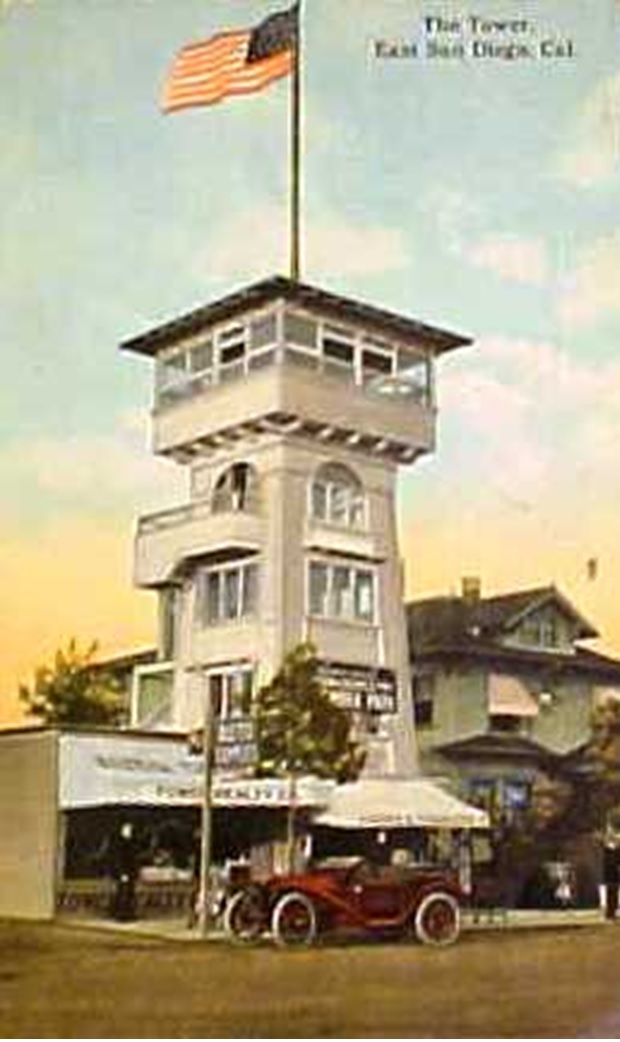
There's no current documentation where Marshal Justice might have operated from but it was quite likely out of City Hall. The first East San Diego City Hall was located on the top floor of the five-story Tower Building, located on the north side of what is today the
4300 block of University Ave.

